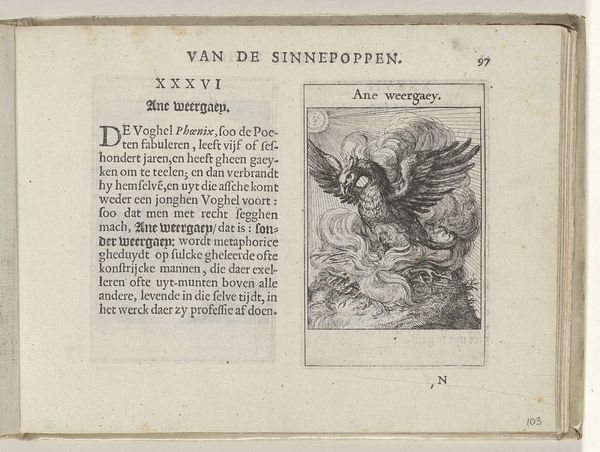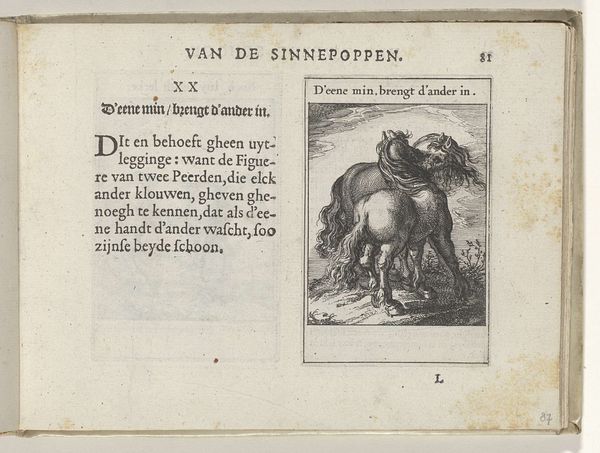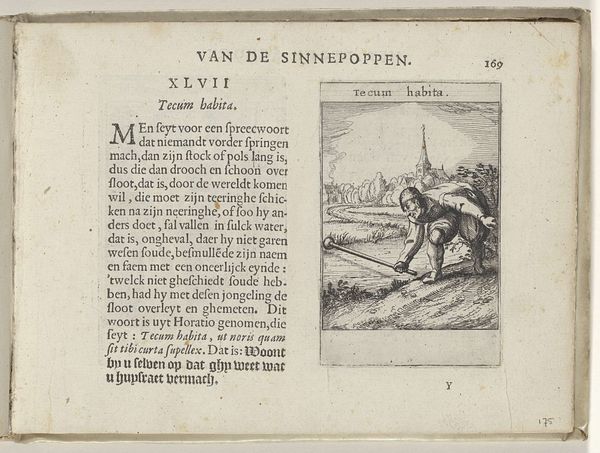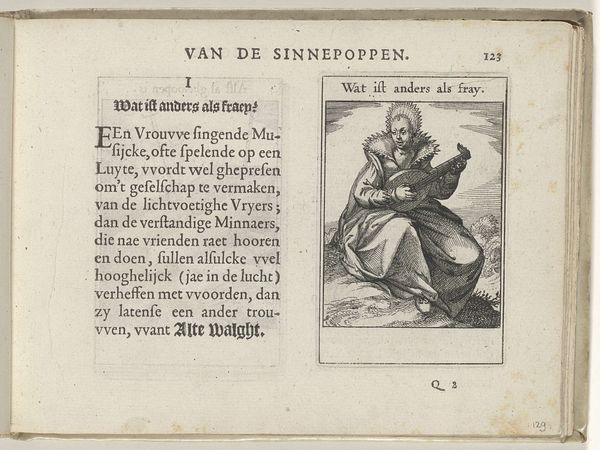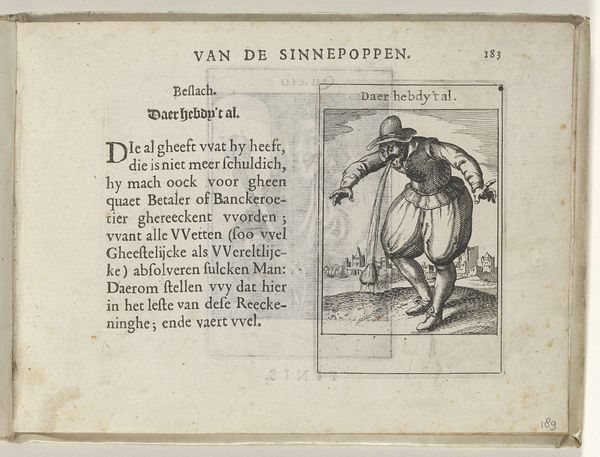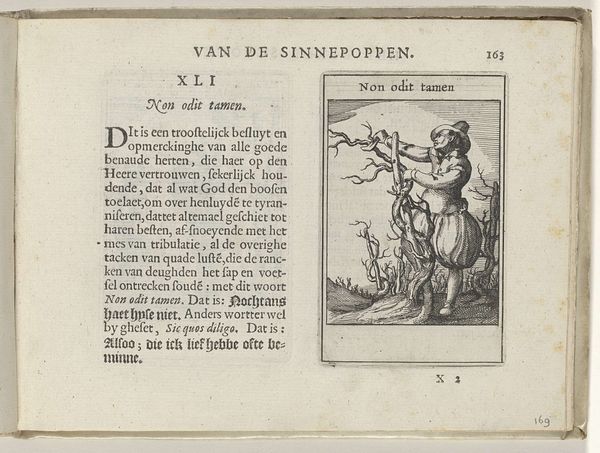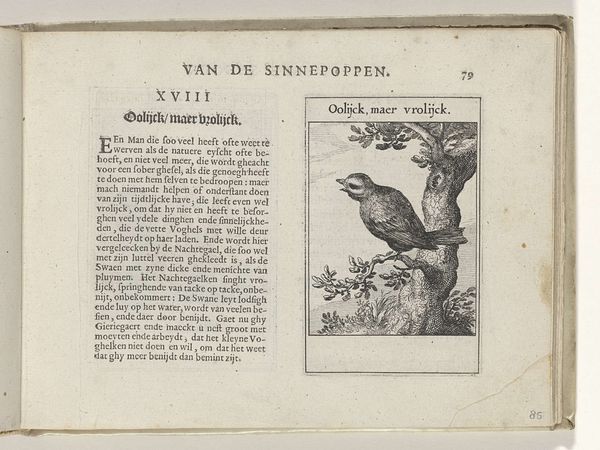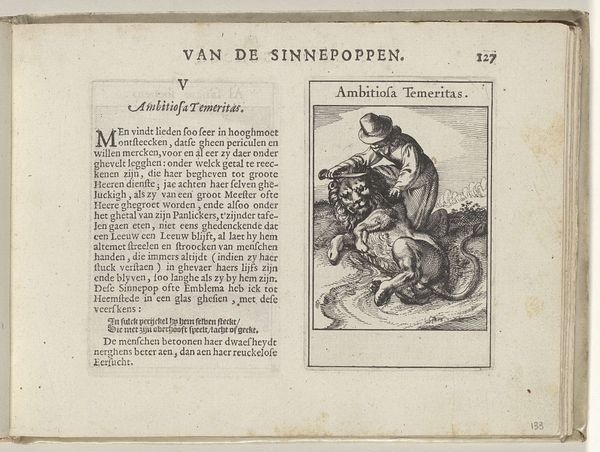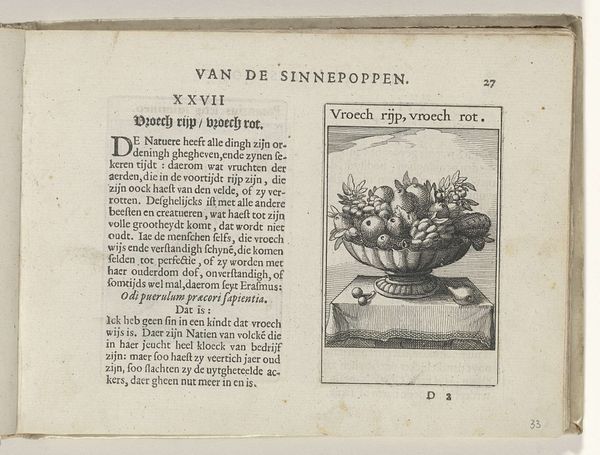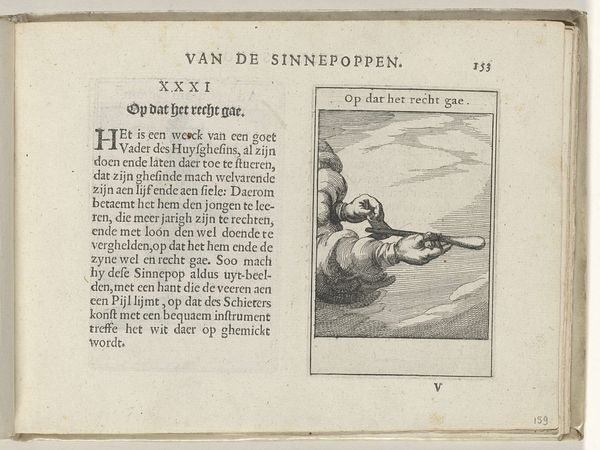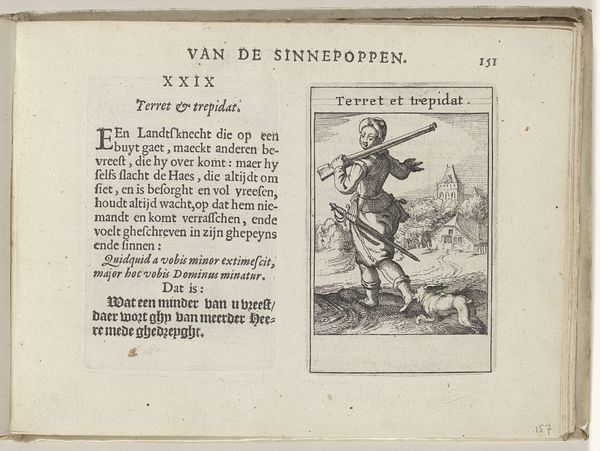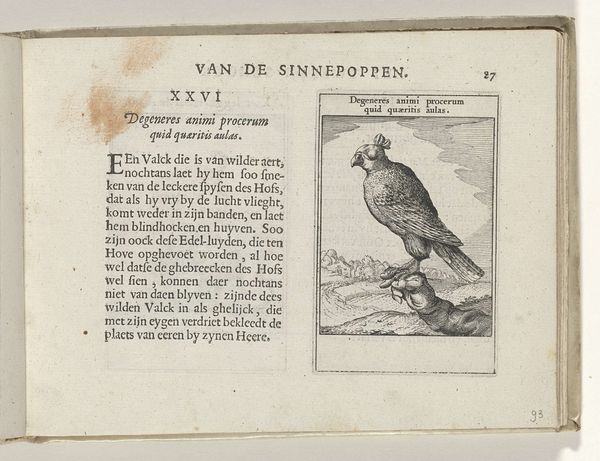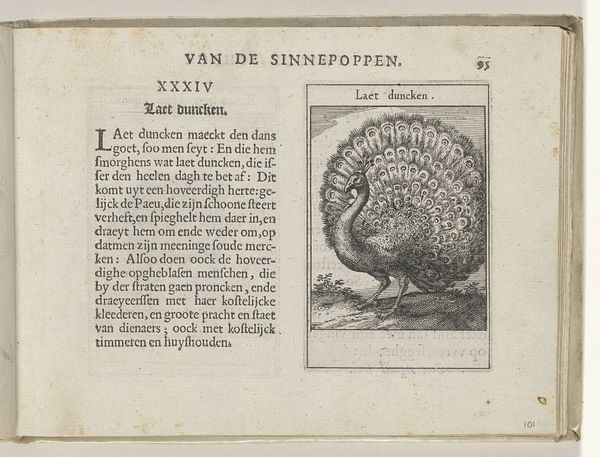
Dimensions: height 137 mm, width 188 mm, height 95 mm, width 60 mm
Copyright: Rijks Museum: Open Domain
This engraving of a griffin was made in the Netherlands around the turn of the 17th century by Roemer Visscher and included in a book of emblems, or allegorical images. Emblems were extremely popular at the time, offering moral or political lessons through symbolic representation. In this case, the griffin, a mythical creature with the body of a lion and the head and wings of an eagle, is associated with tyranny. The text accompanying the image suggests that the griffin, like a tyrant, seizes what it wants by force. The Dutch Republic was in the throes of its Golden Age, fueled by maritime trade. Visscher’s emblem seems to comment on the potential for those in power to abuse their authority, a relevant concern in a society undergoing rapid economic expansion and transformation. To fully understand this emblem, one would want to explore the visual culture of the Dutch Golden Age, including its emblem books, political prints, and popular literature. The Rijksmuseum's collection offers abundant resources for this kind of investigation, demonstrating the importance of historical context in the interpretation of art.
Comments
No comments
Be the first to comment and join the conversation on the ultimate creative platform.
